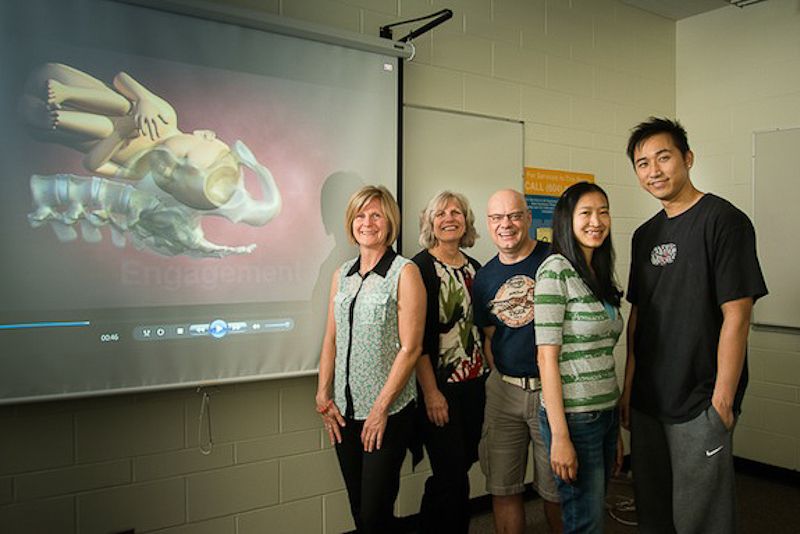
The perinatal nursing program at the British Columbia Institute of Technology (BCIT) helped welcome another baby into the world, only this time in the form of a 3-D teaching aid.
After discovering that another classroom at BCIT had developed a three-dimensional heart, perinatal nursing instructor Nancy Hewer said she thought her students could benefit from a similar teaching tool.
Hewer teaches the perinatal specialty program, where she works with registered nurses who want to move into a new area of practice and specialize in labour and delivery.
“We’ve got students that take our courses either in the classroom or by distance,” Hewer said. “For the students in the classroom I can demonstrate some concepts by using a doll and pelvis but that has always been tricky for our distance students as they don’t have access to that or the explanation.”
Motivated by finding a solution for these distance students, Hewer said she turned to the institution’s 3-D simulation lab, called the CUBE. With a team of developers, Hewer designed an interactive 3-D baby model and pelvis that would aid in teaching how a fetus moves through the birthing canal.
The model debuted in September 2013 in both theory and clinical courses at BCIT after only three months of development.
This new teaching tool allows students to visualize and interact with both the fetus and pelvis, according to Hewer.
“[Nurses] need to do assessments to determine how the fetus is lying in [the pelvis], that informs the care that they provide to the woman while she is in labour,” Hewer said.
She said the model “gives them a visual representation of what we are talking about, helping understand what positions to put the patient in.”
For instance, the 3-D model gives students a visual representation of the “posterior position,” a position of the baby that results in a long and painful labour, Hewer said.
Hewer’s 3-D program is designed to help nurses mentally visualize the baby’s position and work with the mother by positioning her to make the child birth as efficient and pain-free as possible.
“They need to do assessments to determine how the fetus is lying in there and that informs the care that they provide to the woman while she is in labour,” Hewer said.
“So if they know the baby is lying in what’s called a ‘posterior position’ then there is different positions that they could put the mother in to help the baby rotate . . . That as well is information that a prenatal nurse needs to know and understand as it guides her care and decision making when she is looking after the woman in labour.”





